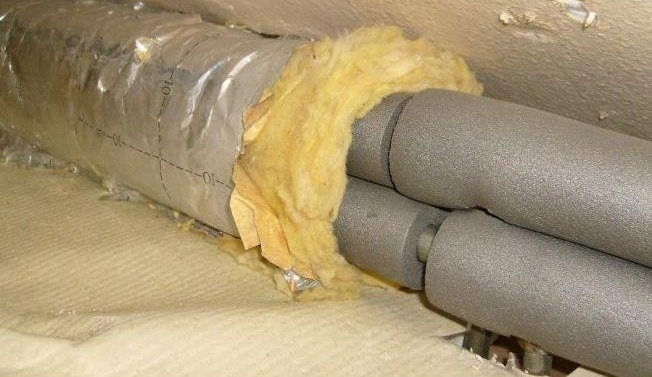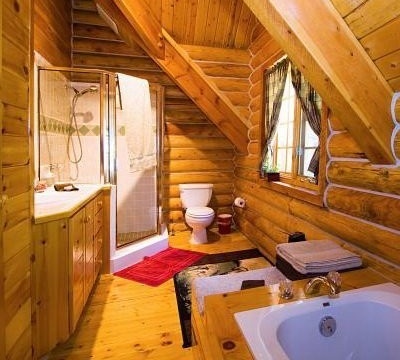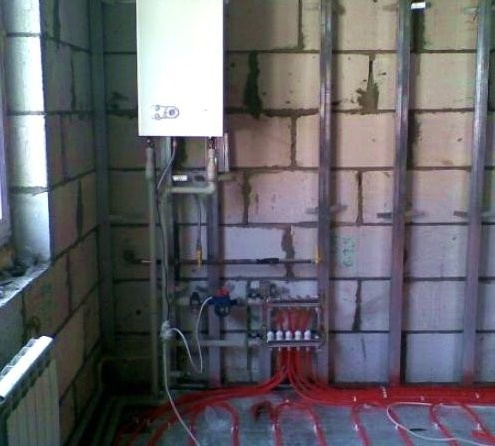Features of laying communications in a frame house
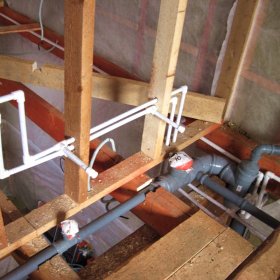
The construction of frame houses around the world is gaining popularity. Large companies offer the creation of such buildings on a turn-key basis, and skilled craftsmen build frame summer houses and cottages with their own hands. On the Internet and popular publications, you can find detailed instructions for creating frame structures: from laying the foundation to installing roofing. However, do not forget about such an important point as laying communications. To the installation of utility networks in frame houses there are special requirements that should be taken into account when designing a house.
Fast, inexpensive and high quality - this incredible combination can still be embodied in a frame house. Lightweight frame buildings do not require the construction of a massive foundation. First, a frame is erected, which is faced on the outside and inside, and the space between the beams is filled with insulation.
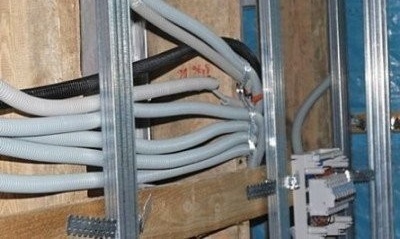
Communications in the frame house can be laid in the thickness of the walls or between the wall and drywall. In the latter case, it will be easier to eliminate the accident.
This design provides a variety of options for the installation of communications. They can be placed:
- inside the frame wall;
- under the floor;
- in the construction of floors;
- in the space between the wall and the exterior layer;
- under the baseboard;
- over the wall.
Of course, communications are laid over the wall in the most hopeless situations, since the pipes located outside do not decorate the interior. Most often, they try to hide them inside the wall, under the floor or in ceilings. In this way, you can hide almost any pipe, but it is not always convenient.
The location of communications in such places makes access to them much more difficult. In the event of an accident, a significant part of the wall and decoration will have to be dismantled in order to find the damaged area and carry out the necessary repairs. In addition, the slots in the beams sometimes cause a significant weakening of the frame. The dimensions of such openings should not exceed 0.75% of the overall beam size.
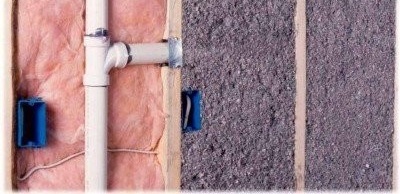
When installing engineering systems in a frame house, special attention should be paid to uniform installation of insulation. Ecowool can be a great option
Please note that if the communications are laid inside the wall, then heat-insulating materials will be more difficult to lay evenly. This point should be taken into account when calculating the required amount of insulation.
And in order to avoid breaking the entire wall in the event of an accident, a decision is often made to lay pipes or wiring in the space between the wall and the drywall. The dimensions of the profile on which the drywall is mounted usually allow the installation of almost all pipes in this way. However, this is not the easiest method, since you need to simultaneously install utilities and drywall. In this case, special slots will have to be made in the metal profile. If there are too many of them, the profile may not stand it.
The placement of communications between the wall and drywall should be carefully planned. However, in the event of an accident, opening the problem area and then restoring it will be much easier than when the pipes are laid in the wall, under the floor or in the thickness of the ceilings.
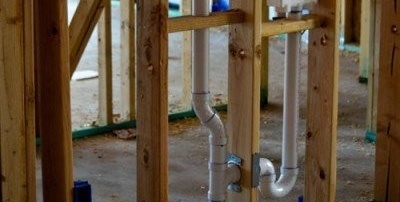
The mounting holes in the beams of the frame house should not exceed 3/4 of the overall dimensions of the structure so that the bearing capacity of the frame remains high enough
As for the placement of communications under the baseboard, this method is considered as auxiliary and is used in combination with other wiring methods. Since the space under the baseboard is limited, it is of course impossible to place all the pipes in this way. For installation, special protective boxes should be purchased. Most often, heating pipes are hidden under the baseboard, which are thus convenient to lead to radiators. The practical experience of laying engineering communications in a frame house is graphically presented in the following video:
Content
Installation of a heating system and water pipes
The requirements for laying pipes of heating and water systems in a frame house are largely similar, so it makes sense to consider the features of their installation at the same time. Since the repair of hidden communications is difficult, you should carefully consider all the nuances. So, it is not recommended to use steel or cast-iron pipes for laying inside frame walls, since these structures are subject to corrosion. In addition, salt deposits quickly accumulate in metal pipes, and replacing them will be quite problematic.
Modern heating systems are made of very durable materials. PEX pipes (cross-linked polyethylene), metal-polymer and plastic pipes can last up to 75 years. The cause of accidents and leaks during their operation is often the poor quality of connections.
To prevent leaks, special attention must be paid to the joints during installation. Pressure testing of the heating system It is recommended to carry out at elevated pressure of about 8-10 atmospheres. It is necessary to double the working pressure and perform pressure testing for 8-12 hours. At this time, it is necessary to regularly check the pressure in the system. If it remains stable, then the work is done at a fairly high level.

The presence of small leaks during the control crimping is considered quite acceptable. Usually it is 2-3 liters, but can reach 10-50 liters. Identification of weaknesses in the heating or plumbing system will prevent much larger leaks, which can lead to extensive damage to internal structures.
When installing a water supply or heating system, the number of connections should be minimized using as many long pipe sections as possible, although this method can significantly increase costs. Of particular note is the quality of the connecting elements. Do not use cheap fittings made in China. Practice shows that approximately 20% of such parts are defective. In the best case, they will fail during pressure testing, but worse if a leak occurs during operation, when the finishing work is completed. And yet - although the pipes are usually very durable, they can be damaged during inaccurate transportation or during loading and unloading.
Condensed moisture may appear on cold water pipes, which should be considered during installation. Therefore, such pipes are usually protected with a special corrugated sleeve so that moisture does not get on the insulation and does not damage it.Holes for cold water supply make about 50-100 mm larger than the diameter of the pipe protected by corrugation.
Features of installing sewage
There are no special requirements for laying a sewer system in a frame house. Usually it is mounted in the walls and under the floor. The outer part of the sewer system is led to a septic tank or other treatment facilities provided on the site. A certain danger to the frame house is the use of pressureless PVC sewer pipes.
The fact is that it is impossible to discharge drains into such pipes, the temperature of which exceeds 60 degrees. If an automatic or dishwasher is installed in the house, drains heated to 90-95 degrees can get into the system. This can lead to a quick breakdown of the sewer system. It is better to use more heat-resistant pipes made of polypropylene, which can withstand temperatures of 100 degrees.
Rules for arranging electrical wiring
Since improper wiring can lead to fire, these operations should be carried out in strict accordance with the established rules. If the wiring is located behind partitions or under a suspended ceiling, it must be considered as a hidden wiring. In this case, it is necessary to eliminate the possible contact of the electric cable with combustible materials, of which partitions, walls, ceiling, etc. are made.
The cable should be laid localized, for example, in special metal pipes or closed boxes. It is also allowed to use cables that do not spread combustion. Particular attention should be paid to the possibility of replacing damaged wiring.
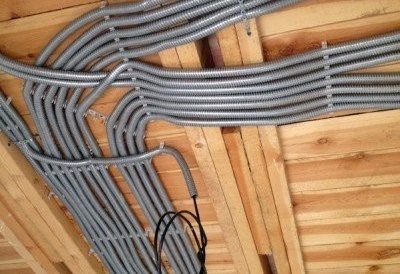
When laying electrical wiring in a frame house, you must adhere to the established rules. The cable should be laid in a special box or metal pipe
It is not allowed to use a metal hose for localization of electrical wiring in a frame house, only pipes and ducts that are resistant to short circuits are permissible. Open wiring is also mounted only in boxes or under a special fireproof baseboard.
